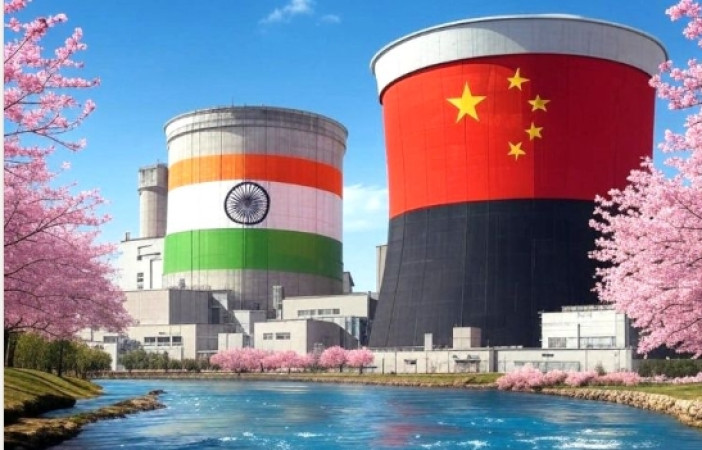
Follow India Renewable Energy News on WhatsApp for exclusive updates on clean energy news and insights
India’s Nuclear Energy Growth vs. China’s Rapid Expansion – A Reality Check
Feb 09, 2025
India currently operates ~8GW of nuclear power and aims to expand to 22GW by 2032 and 100GW by 2047. However, China is advancing at an unprecedented pace, with 56GW already operational, adding at least 10GW annually, and targeting 200GW by 2035—double India's 2047 goal.
A key difference lies in technology. India is still deploying 2nd generation reactors, while China has moved ahead with 3rd generation designs and unveiled its first 4th generation reactor in 2023. Over the past 20 years, while India has made progress, China has advanced at a much faster pace, scaling up nuclear infrastructure, investment, and technological capabilities.
China currently has more nuclear reactors under construction than the rest of the world combined, reducing costs to a third of the U.S. and positioning itself as a global nuclear reactor exporter. By 2030, it plans to build 30 reactors abroad, generating Rs12,733.03 in revenue. In contrast, India faces higher costs for developing lower-generation reactors, slowing its progress in nuclear energy.
Another major challenge is uranium supply. India’s 8GW nuclear capacity requires ~450 tons of uranium, of which ~100 tons is imported annually. Meanwhile, China, with 56GW, has nearly achieved self-sufficiency in uranium sourcing, thanks to facilities like the Lanzhou uranium enrichment plant, which produces 3,000 tons per year—7x India’s total requirement.
This stark contrast highlights India’s need for faster scaling, greater investment, and enhanced technological innovation to bridge the nuclear energy gap with global leaders like China. Without addressing these gaps, India risks falling further behind in the race for energy security and nuclear power expansion.